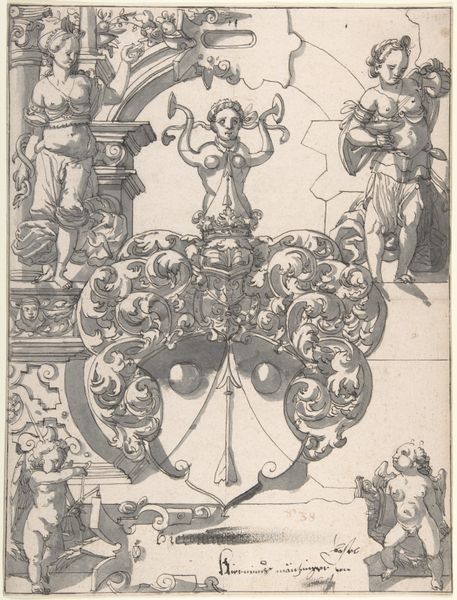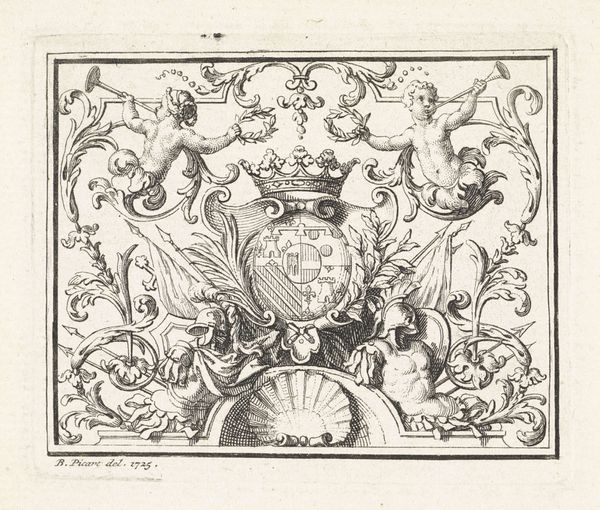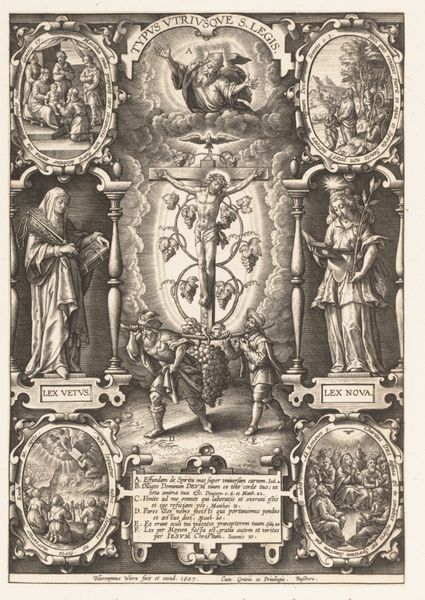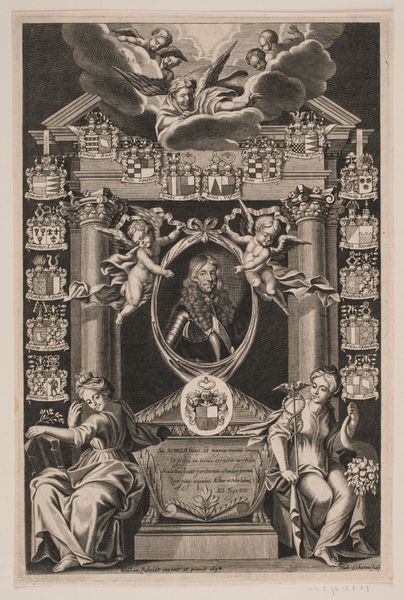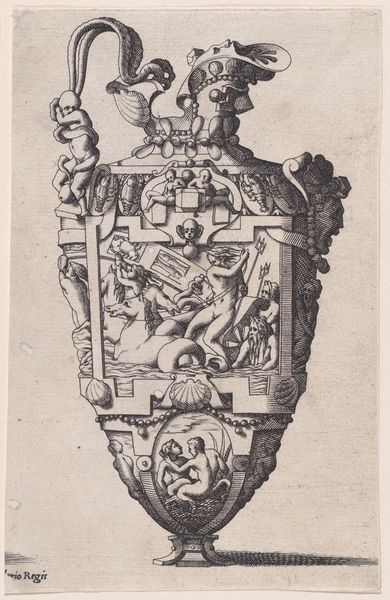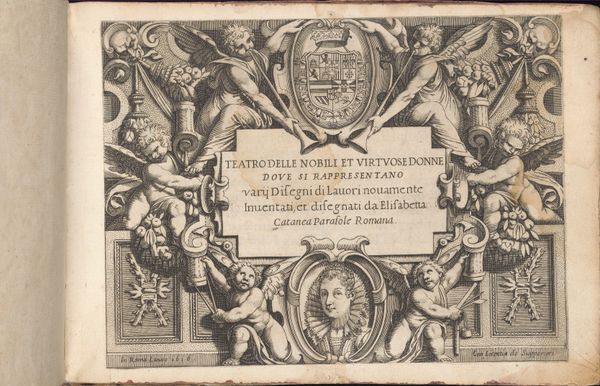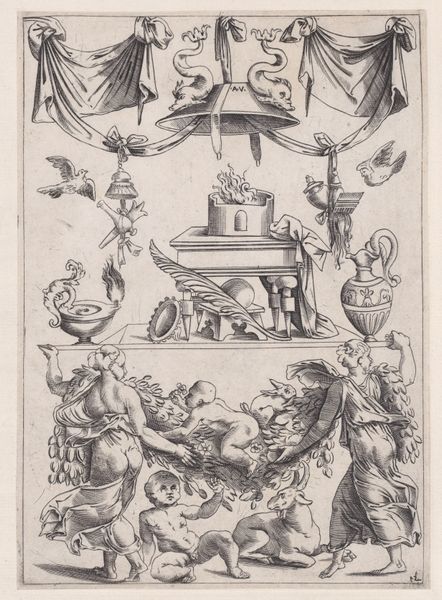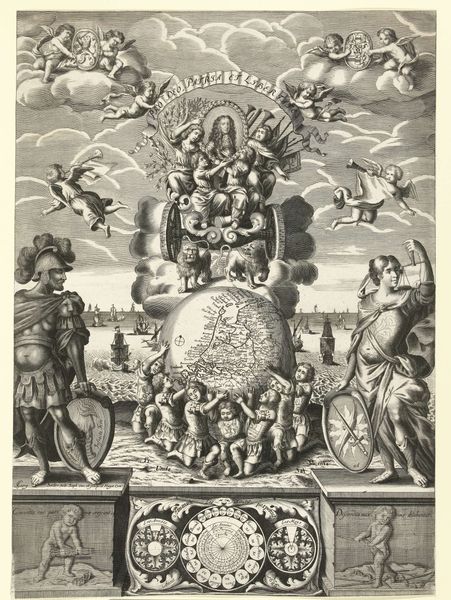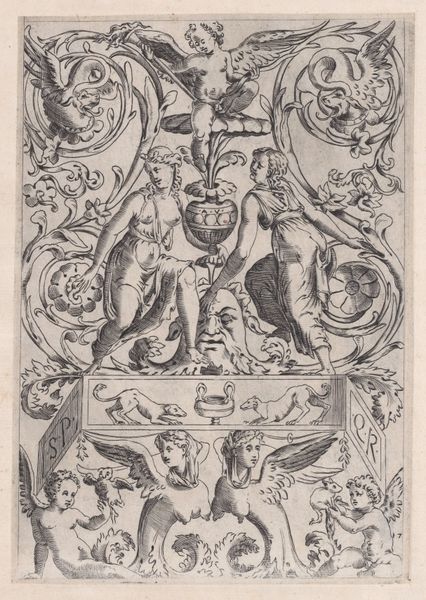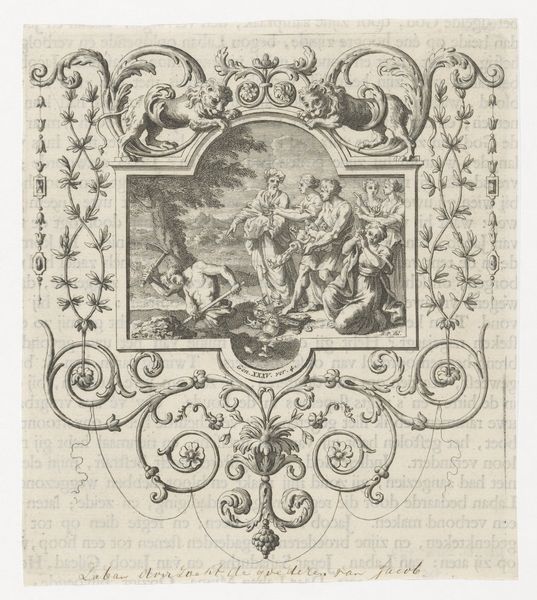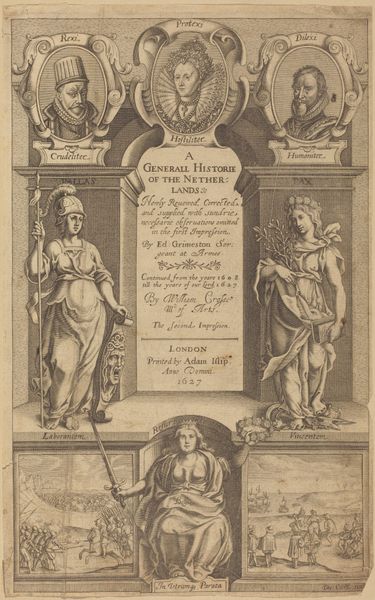
print, intaglio, engraving
#
baroque
# print
#
intaglio
#
old engraving style
#
geometric
#
pen-ink sketch
#
line
#
history-painting
#
decorative-art
#
engraving
Dimensions: height 172 mm, width 135 mm
Copyright: Rijks Museum: Open Domain
Curator: Let's delve into this fascinating print: “Cartouche met het wapenschild van Antonio Savori,” created in 1608 by an anonymous artist. It’s an engraving, using the intaglio process. Editor: It’s striking how the lines carve out these almost surreal, dreamlike details. There's a mermaid figure, a dolphin-like creature—everything rendered with incredible precision. It’s baroque, definitely dramatic, but constrained. Curator: Indeed. It served as a presentation print. Such pieces acted as dedication pages in books or stand-alone presentation pieces commissioned to honor important figures. In this instance, it's dedicated to Antonio Savori. It tells us something about status and patronage in the early 17th century. Editor: I am very much focused on the interplay between the heraldic imagery at the center and the fantastical marine creatures. The balance creates tension, especially given the overall flatness achieved via the engraving technique. The geometry seems really deliberate too. Curator: Well, it all speaks to the importance of symbols in early modern European society. A coat of arms wasn’t just decoration; it represented family history, social standing, and even political alliances. The dolphin, often associated with Genoa, Antonio Savori's birthplace, connects Savori to Liguria and shows off a commitment to place. Editor: But observe how the compass face peeks out from the top-right. It is almost a symbol of the period – one of navigation, and certainly connected with a new kind of science. Yet, I’d still be inclined to describe this less as 'history-painting' than a 'decorative art' piece, meant to be appreciated for the craft, for the line work, and composition in addition to anything it signals symbolically. Curator: Of course, we should bear in mind the location this was produced, the text on the print indicates this image was made in Anversa. And in fact, we can see by Gio. Bat. Vrints on the text, this engraver from Antwerp. Which is useful for considering how Antwerp's printing production contributed to this kind of presentation imagery. Editor: All of this gives me more to think about as I appreciate its complexity. The engraving contains layers of symbolic references alongside beautiful patterns and shapes. Curator: Exactly! It gives us clues for how such figures wished to present themselves.
Comments
No comments
Be the first to comment and join the conversation on the ultimate creative platform.
